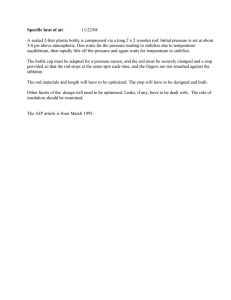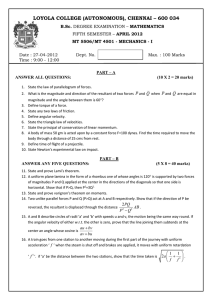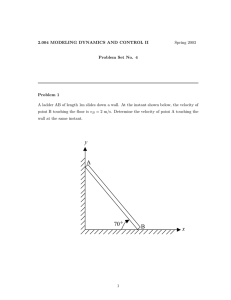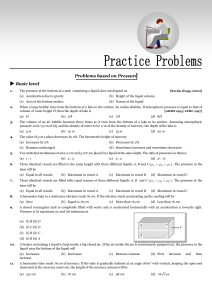§4.5 Homework Problems – due with HW #11 Additional problems 2π
advertisement
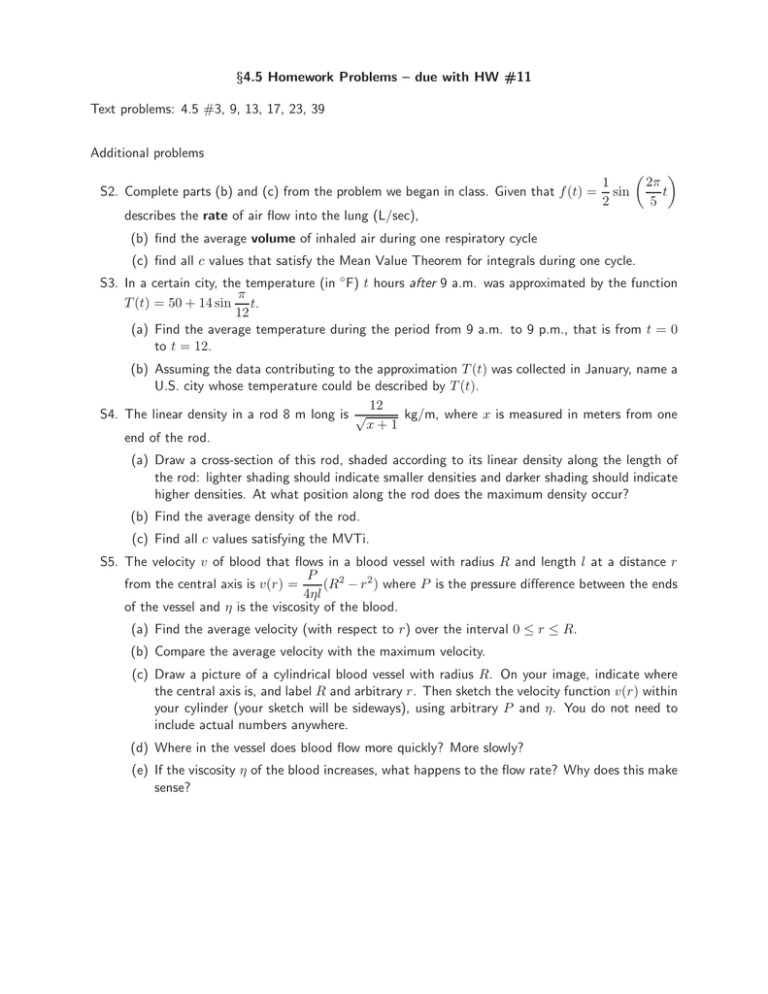
§4.5 Homework Problems – due with HW #11 Text problems: 4.5 #3, 9, 13, 17, 23, 39 Additional problems 1 S2. Complete parts (b) and (c) from the problem we began in class. Given that f (t) = sin 2 describes the rate of air flow into the lung (L/sec), 2π t 5 (b) find the average volume of inhaled air during one respiratory cycle (c) find all c values that satisfy the Mean Value Theorem for integrals during one cycle. S3. In a certain city, the temperature (in ◦ F) t hours after 9 a.m. was approximated by the function π T (t) = 50 + 14 sin t. 12 (a) Find the average temperature during the period from 9 a.m. to 9 p.m., that is from t = 0 to t = 12. (b) Assuming the data contributing to the approximation T (t) was collected in January, name a U.S. city whose temperature could be described by T (t). 12 kg/m, where x is measured in meters from one S4. The linear density in a rod 8 m long is √ x+1 end of the rod. (a) Draw a cross-section of this rod, shaded according to its linear density along the length of the rod: lighter shading should indicate smaller densities and darker shading should indicate higher densities. At what position along the rod does the maximum density occur? (b) Find the average density of the rod. (c) Find all c values satisfying the MVTi. S5. The velocity v of blood that flows in a blood vessel with radius R and length l at a distance r P (R2 − r 2 ) where P is the pressure difference between the ends from the central axis is v(r) = 4ηl of the vessel and η is the viscosity of the blood. (a) Find the average velocity (with respect to r) over the interval 0 ≤ r ≤ R. (b) Compare the average velocity with the maximum velocity. (c) Draw a picture of a cylindrical blood vessel with radius R. On your image, indicate where the central axis is, and label R and arbitrary r. Then sketch the velocity function v(r) within your cylinder (your sketch will be sideways), using arbitrary P and η. You do not need to include actual numbers anywhere. (d) Where in the vessel does blood flow more quickly? More slowly? (e) If the viscosity η of the blood increases, what happens to the flow rate? Why does this make sense?



